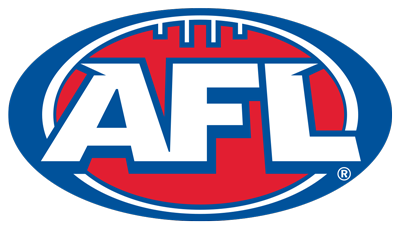What is Australian Rules Football?
Last updated on March 23, 2024 at 18:06 pm
Posted on March 23, 2024 at 18:00 pm
Australian Rules Football traces its roots back to mid-19th century Melbourne, where it began as an innovative and competitive sport. Originating in local private schools, it quickly gained popularity. The Melbourne Football Club, established in 1859, played a pivotal role in structuring the game. With formalized rules and governing bodies, the sport spread across Australian colonies, leading to the formation of leagues like the Victorian Football League in 1896. The evolution and expansion of Australian Rules Football have left a lasting legacy, shaping the sport’s future. This fascinating journey reveals a narrative rich in history and development.
Origins and Early Development
During the mid-19th century, the genesis of Australian rules football, also known as Aussie rules football, or footy, can be traced back to Melbourne, Victoria, where the sport first took shape and evolved. In 1858, Melbourne private schools began organizing football games, laying the foundation for what would become a unique and popular sport.
Tom Wills, a significant figure in Australian football, played an essential role in its development. Influenced by English public school football games, the early matches in Melbourne led to the establishment of the Melbourne Football Club in 1859. These initial games set the stage for the subsequent drafting of ten rules aimed at creating a simple code suitable for Melbourne’s playing surfaces and ensuring fair play.
Establishment of Rules and Governing Bodies
The formulation of rules and the establishment of governing bodies were pivotal in shaping the structured framework of Australian rules football during its early development phase in Melbourne, Victoria. In 1859, the Melbourne Football Club drafted ten rules, including key contributors like Tom Wills, aimed at creating a simple code suitable for Melbourne’s playing surfaces. These rules were designed to reduce rough play and the risk of injuries, setting the foundation for the sport’s growth.
The Melbourne Football Club played an important role in formalizing the rules and guiding the early development of the game. The establishment of various Australian rules football clubs and organized competitions further solidified the sport’s presence in Victoria during the 19th century, laying the groundwork for its expansion across Australian colonies.
Spread Across Australian Colonies
In the 1860s, Australian rules football rapidly spread across various Australian colonies, marking a significant phase in its evolution and establishment outside of its birthplace in Melbourne, Victoria. The sport’s expansion saw the formation of new clubs and leagues in different regions.
The Adelaide Football Club was established in South Australia in 1860, followed by the formation of the South Australian Football Association in 1877. Tasmanian clubs adopted Victorian rules in 1879, further solidifying the spread of Australian rules football across the colonies.
Intercolonial matches began in the late 1870s, showcasing the growing popularity and competitiveness of the sport beyond Melbourne. This period laid the foundation for the sport’s continued growth and development across Australia.
Evolution of Competitions and Leagues
With the establishment of new competitions and leagues, the evolution of Australian rules football entered a pivotal phase marked by increased organization and structured gameplay. Following the formation of the Victorian Football League (VFL) in 1896, the sport saw significant advancements. The VFL introduced innovations such as the finals system and behind scoring, shaping the future of Australian rules football competitions.
National and Global Expansion
Amid the growth and evolution of Australian rules football, its reach transcended national borders, enthralling audiences not only within Australia but also across international territories. The sport’s expansion beyond Australia began with the establishment of the first national interstate competition in 1908, marking a significant milestone.
Australian rules football experienced a revival in New South Wales, New Zealand, and Queensland around 1901, leading to the formation of football leagues in these regions by 1903. The Australasian Football Council was established in 1908 to oversee the sport’s development across different territories.
The Jubilee Australasian Football Carnival of the same year further solidified the game’s presence globally, attracting mass spectator appeal and earning the reputation as the people’s game.
Key Milestones in Australian Football
The progression of Australian Rules Football can be traced through a series of pivotal milestones that have shaped the sport’s development and influence over time.
One key milestone was the formation of the Adelaide Football Club in South Australia in 1860, marking the spread of the sport beyond Melbourne.
In 1896, the Victorian Football League (VFL) was established by delegates from wealthy Victorian Football Association (VFA) clubs, ushering in a new era of organized competition.
The VFL’s innovations, such as the introduction of a finals system and behind scoring, helped solidify its position as the premier league in Australia by 1925.
These milestones highlight the evolution and growth of Australian Rules Football beyond its origins in Melbourne.
Influence and Legacy of Australian Rules Football
The enduring influence and profound legacy of Australian Rules Football resonate deeply within the fabric of Australian sporting culture and history. Originating in Melbourne in 1858, the sport has evolved to become a significant part of the nation’s identity. Its impact is evident in the high spectator attendance, TV viewership, and the iconic AFL Grand Final held at the Melbourne Cricket Ground.
Australian Rules Football’s expansion to other colonies, development of organized competitions, and the establishment of the VFL have all contributed to its enduring legacy. The sport’s ability to attract mass spectator appeal, innovate with rules like the running bounce and behind scoring, and spread to regions like New Zealand and Queensland showcase its continued influence and legacy in the sporting world.













